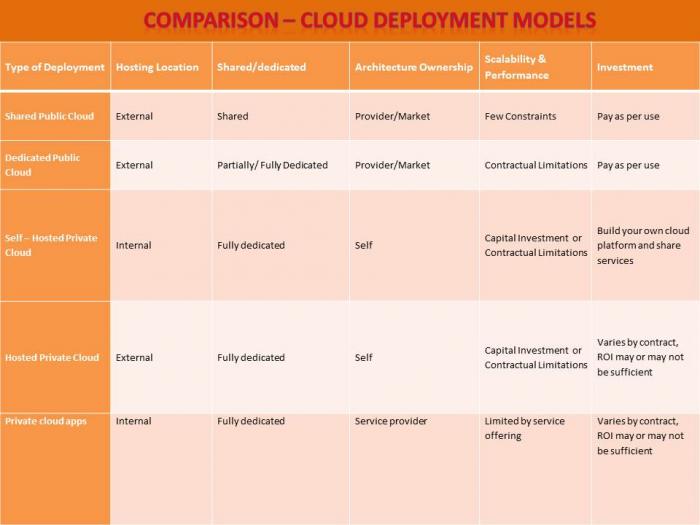Other recent blogs



Let's talk
Reach out, we'd love to hear from you!
Evolution of ‘Cloud Computing’
The buzzword ‘cloud computing’ is not a current offering. The concept was introduced in the late 1980s with grid computing; several computer resources were collected from various locations to resolve a single problem; scientific in nature and needing high levels of parallel computation. For example, in the education industry, optical networks connect multiple universities using a computing grid for sharing resources and upscaling scientific calculations.
In layman terms, cloud refers to a storage space that offers several computing techniques to Internet users.

Why should businesses care to adopt cloud computing. A research by industry expert Forrester explains the need of integrating cloud solutions in your business operations.

Cloud Computing Stack
What do you know about IaaS, PaaS, or Saas.? The following image will give a clear description of how these three types of cloud computing function.

Software as a service (SaaS) refers to cloud application services. This cloud platform creates apps using the Internet, which are managed by a third-party cloud services vendor while the clients manage the app’s interface. You can run the SaaS app from any web browser directly; you do not need to download the app or install it anywhere. However, some plugins are required for running the app successfully.
Popular offerings of include email collaboration, CRM services, and healthcare apps. Building SaaS-based apps are an additional revenue source which helps you stay ahead. You must be using Google Apps, aren’t you? But, did you know that Google Apps is SaaS-based.
Now, let’s see what PaaS is. The acronym stands for Platform-as-a-Service. The cloud platform services help in application development and provide essential cloud components to your software architecture.
You may think, how will PaaS help you as a software developer? It surely will because you will get a pre-defined framework to customize your applications and test your software development skills.
PaaS framework helps development, testing, and deployment of applications in a quick, simple, and cost-effective manner. You can manage business operations yourself or hire the services of a third party PaaS provider. Management functions include OSes, virtualization, servers, storage, networking, and complete PaaS software. However, your developers can manage PaaS applications as well
On the business front, the PaaS framework provides a self-service portal to manage computing infrastructure from a centralized network and platforms installed along with the necessary hardware. PaaS applications can be provided using a hybrid cloud model, i.e. a combination of public IaaS and on-premise cloud infrastructure or a pure private PaaS using on-premise infrastructure.
Common examples of PaaS include Windows Azure, AWS Elastic Beanstalk, Heroku, Apache Stratos etc.
Going to the third form of cloud computing, i.e.Infrastructure as a Service (IaaS), these are self-service models used for accessing, monitoring, and managing remote datacenter infrastructures, like computing, storage, networking, and networking services (e.g. firewalls). Enterprises can purchase IaaS on the basis of consumption, similar to electricity or other utility billing.
Common examples include Amazon Web Services (AWS), Microsoft Azure, , Cisco Metapod etc.
10 Ways Cloud Computing Makes Life Easier
If you are getting confused with the technical jargons, here are some applications of cloud computing that will make your life easy.
- Payment Receipts: Mostly, we have a habit of saving our paper receipts in a file or a box; however keeping a record of those receipts and the supporting expenses remains a challenge for us. The best solution is using cloud-based tools providing automated functions like tracking expenses, income, and investments becomes automated. Cloud computing tools help users in uploading and storing these receipts.
- Shopping simplified: Juggling responsibilities of home, work, family, etc makes shopping a nightmare. Time constraints, misunderstandings, and visiting the brick and mortar store is more of a trouble than you can think. Cloud services such as Out of Milk, helps users prepare and share shopping lists on the go.
- Photos: Capturing memorable moments makes you feel happy. Being able to share them with your close friends and family members instantly is another interesting and exciting fact. Often, you have photos and albums on multiple platforms like Facebook, Twitter, phone, desktop, and mobile device. Navigating across multiple platforms is time consuming, and even disorganized. Now, cloud solutions like Google Drive helps you store your photos and albums in one place and that too securely.
- Documents: You are surrounded by different types of documents ranging from work documents, bills, school records, health records, business information etc. however managing them is a tough task. Dropbox, a cloud storage solution provides free storage of documents with options of extending the memory.
- Enhanced security: With cloud based solutions, you can store documents over a cloud server and monitor their security from a remote location. An extra layer of protection is provided through data encryption. It is a safe option for government organizations and financial enterprises.
- Backups: Loss of data is not a worry anymore as cloud computing tools offer automatic backup of the stored data.
- Cost-effective: Free cloud-based applications are also on offer that makes our life simpler. Apps like Box, Google Drive, Evernote etc come with robust functionalities that are time saving and cost-effective. An organization does not need to hire an accountant, personal assistant, or any other paid cloud storage solutions.
- Manage daily tasks: Have you ever faced problems in remembering appointments, business meetings, reminders or other work-related activities? Cloud-based solutions such as Todoist help users record, access, and share tasks across any platform. It provides users with notifications, reminders, and automated tools to stay up-to-date.
- Send automated emails: Gmail, a cloud-based email platform includes scheduled responses, email reminders, and other important notifications. Boomerang is another tool that automates email engagement tasks which allows users to focus on other important business activities.
- Saving information for future: Research on Internet is a time-consuming task. Cloud computing applications like Pocket and Evernote helps users ‘clip’ website content and save it for future use. These apps also use categorization tools that help users find the required article/image quickly.
Private vs public cloud

Finding the right mix
Getting the best from both worlds leads to business success. From smart digital assistants to automated cars to virtual reality, technology is being implemented and enhanced with the addition of new computing models and computing accelerators to the present servers and cloud-based infrastructure.
Enterprises must evaluate their business requirements and consider the experience of the cloud service provider to select the appropriate model.
Comparison – Cloud deployment models

Presently, servers have come a long way from the CPU-dominated world that existed few years ago. The emergence of new types of tasks is giving rise to development of optimized chip accelerators to perform certain tasks. Google, for example, introduced a TPU, i.e. a chip designed (customized version of an FPGA) specifically to accelerate the performance of their TensorFlow which is a deep learning software
The International Data Corporation (IDC) predicts that 70% of enterprises in Southeast Asia countries will adopt a hybrid cloud strategy. While the change poses challenges in calculating the ROI and getting management buy-in, enterprises must realize that cloud adoption will be an important decision to reduce cost and help achieve goals of business transformation, scalability, and agility.
Enterprises in Southeast Asia choose to manage their infrastructure and applications using internal resources rather than outsourcing. However, traditional in-house deployment of such management services will decrease when enterprises realize the value derived from shifting to the hybrid cloud.
IT enterprises must clearly define business objectives and understand how hybrid cloud strategy will help them achieve these objectives. Enterprises will engage with third party vendors to avail end-to-end outsourcing services including Cloud services. Thus, greater pressure will be put on traditional outsourcing service providers to transform their business that is aligned to customer needs.
Developing hybrid cloud solutions is complex; companies will face challenges with integration and migration of data from traditional servers to the cloud. Vendors like Amazon Web Services have already introduced their hybrid cloud services; several third-party enterprises are developing tools for deploying and managing hybrid cloud solutions.
Doubts related to security of cloud computing linger and undoubtedly, this approach gives rise to ambiguous service level agreements. However, cloud –based service providers have attempted to address some of the risks by developing cloud bursting, an effective technique of data recovery.
A strong hybrid cloud will play a vital role in aligning business needs and outcomes. It provides the necessary structure to enterprises for delivering an IT solution, which is flexible, agile, and service-oriented. Additionally, data integration is well-defined and it ensures data security and complies with all legal requirements.



